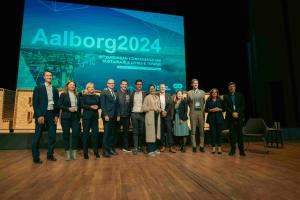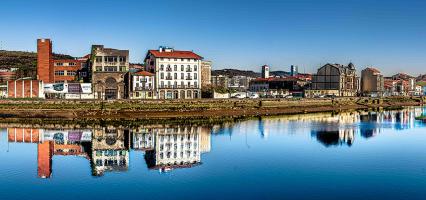Thessaloniki gets ready for its metro launch in November
The underground rapid transit lines have been under construction for almost two decades due to various project delays
 TheMayor.EU logo
TheMayor.EU logo According to researchers at the University of Graz, emissions rose sharply in the previous year
Yesterday, researchers in the Wegener Centre for Climate and Global Change at the University of Graz published a study on carbon emissions in Austria. According to the data, in 2021 the country’s CO2 emissions rose by 6.5% and were back to their 1990 level. This essentially means that to reach carbon neutrality by 2040 and adhere to the Paris Climate Accord, Austria has to reduce emissions by 95% in the next 18 years.
The Paris Climate Accord states that a country needs to be carbon-neutral compared to emissions levels in 1990, meaning that Austria has made no progress towards reaching that goal in the last 30 years.
When the pandemic first hit in 2020, many industries slowed to a crawl, while personal transportation with cars was nearly non-existent for much of the year. Carbon emissions also fell dramatically during the year and many governments were optimistic about continuing the trend.
However, scientists are now saying that 2020 was a fluke. In 2021, as many services began picking up speed again and restrictions gradually fell away, emissions started to rise. In Austria, they rose by 6.5% compared to 2020, reaching their level from 1990. This means that Austria has a carbon budget of just 700 million tons to emit until reaching neutrality.
Furthermore, the researchers explain that 90% of the reductions have to come from fossil energy and industry, while carbon storage in agriculture and forestry can also help to quicken the process.
Interestingly, emissions seem to be a persistent issue, despite the fact that Austria is constantly unveiling new green projects and the national railway’s 100% carbon neutrality.
Despite Austria having to reduce its own impact on the environment, the report of the Wegener Centre also pointed to the government’s responsibility towards developing countries. Dr Gottfried Kirchengast explained that additional equalisation funds need to flow towards different parts of the world, financing sustainable energy.
The rationale behind this idea is that there are still a lot of countries in Africa and Asia that lack reliable amenities like electricity, heating and sanitation for the population. Instead of these countries going through a phase of heavy emissions and an energy system based around coal, the developed world should help them to build up their infrastructure directly with renewable energy. This would basically skip the heavy emissions cycle that Europe and the US went through in the 19th and 20th centuries.

The underground rapid transit lines have been under construction for almost two decades due to various project delays

Now you can get your wine in Talence by paying directly in Bitcoin

That’s because the state has to spend money on updating the railway infrastructure rather than subsidizing the cost of the popular pass

Rethinking renewable energy sources for the urban landscape

The examples, compiled by Beyond Fossil Fuels, can inform and inspire communities and entrepreneurs that still feel trepidation at the prospect of energy transition

Now you can get your wine in Talence by paying directly in Bitcoin

The 10th European Conference on Sustainable Cities and Towns (ESCT) sets the stage for stronger cooperation between the EU, national and local level to fast track Europe's transition to climate neutrality.

At least, that’s the promise made by the mayor of Paris, Anne Hidalgo

The underground rapid transit lines have been under construction for almost two decades due to various project delays

At least, that’s the promise made by the mayor of Paris, Anne Hidalgo

Hostal de Pinós is located in the geographical centre of the autonomous region

Despite its church-y name, the district has long been known as the hangout spot for the artsy crowds

Urban dwellers across the EU are having a say in making their surroundings friendlier to people and the environment.

Forests in the EU can help green the European construction industry and bolster a continent-wide push for architectural improvements.

Apply by 10 November and do your part for the transformation of European public spaces

An interview with the Mayor of a Polish city that seeks to reinvent itself

An interview with the newly elected ICLEI President and Mayor of Malmö

A conversation with the Mayor of Lisbon about the spirit and dimensions of innovation present in the Portuguese capital














